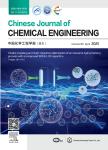版权所有:内蒙古大学图书馆 技术提供:维普资讯• 智图
内蒙古自治区呼和浩特市赛罕区大学西街235号 邮编: 010021

作者机构:State Key Laboratory of Multiphase Complex SystemsInstitute of Process Engineering Chinese Academy of SciencesBeijing 100190China University of Chinese Academy of SciencesBeijing 100049China School of Chemical Engineering and TechnologyTianjin UniversityTianjin 300072China
出 版 物:《Chinese Journal of Chemical Engineering》 (中国化学工程学报(英文版))
年 卷 期:2016年第24卷第9期
页 面:1122-1134页
核心收录:
学科分类:080706[工学-化工过程机械] 08[工学] 0807[工学-动力工程及工程热物理]
基 金:Supported by the National Natural Science Foundation of China(21225628,51106168,11272312) the“Strategic Priority Research Program”of the Chinese Academy of Sciences(XDA07080000)
主 题:Immersed boundary method CPU–GPU hybrid computing Stirred tank Large eddy simulation
摘 要:Conventionally, multiple reference frame(MRF) method and sliding mesh(SM) method are used in the simulation of stirred tanks, however, both methods have limitations. In this study, a hybrid immersed-boundary(IB)technique is developed in a finite difference context for the numerical simulation of stirred tanks. IBs based on Lagrangian markers and solid volume fractions are used for moving and stationary boundaries, respectively, to achieve optimal efficiency and accuracy. To cope with the high computational cost in the simulation of stirred tanks, the technique is implemented on computers with hybrid architecture where central processing units(CPUs) and graphics processing units(GPUs) are used together. The accuracy and efficiency of the present technique are first demonstrated in a relatively simple case, and then the technique is applied to the simulation of turbulent flow in a Rushton stirred tank with large eddy simulation(LES). Finally the proposed methodology is coupled with discrete element method(DEM) to accomplish particle-resolved simulation of solid suspensions in small stirred tanks. It demonstrates that the proposed methodology is a promising tool in simulating turbulent flow in stirred tanks with complex geometries.